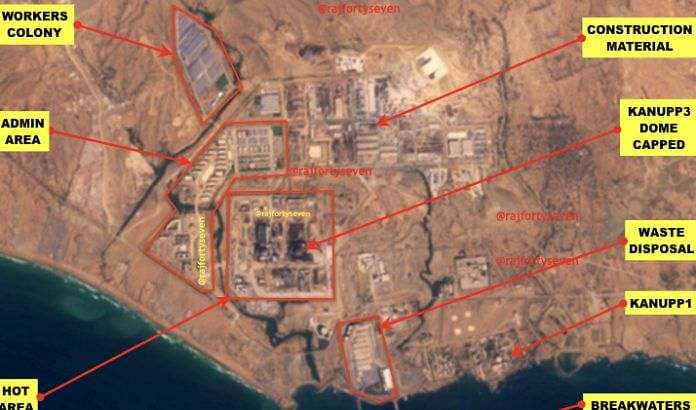The construction of the two nuclear power plants began in 2013, about 25 km west of Karachi, and is scheduled for completion in 2021 & 2022.
New Delhi: The nuclear power plants Pakistan is building with Chinese assistance near its commercial capital city of Karachi are making fast progress.
The plants are part of power-strapped Pakistan’s plans to tap nuclear energy to address its energy crisis while also reducing its dependence on conventional, non-renewable sources such as oil and coal. They are scheduled for completion in 2021 and 2022.
Pakistan currently generates only 5 per cent of its total power from nuclear sources, with oil, coal and hydro accounting for the rest.
Also read: China has quietly altered its boundary with Bhutan after Doklam stand-off with India
Chinese assistance
Pakistan’s power crisis has made headlines for years, with hours-long load-shedding (power cuts to satisfy a supply shortfall) a common phenomenon in the country, especially during the punishing south Asian summer.
One of its more desperate measures to address the crisis saw the Pakistan government contract a floating power plant, Kaya Bey, from a Turkish company for five years in 2009. However, the efforts failed, and, a year into operations, the Supreme Court cancelled the contract. The case was eventually taken to an arbitration court from the Turkish side.
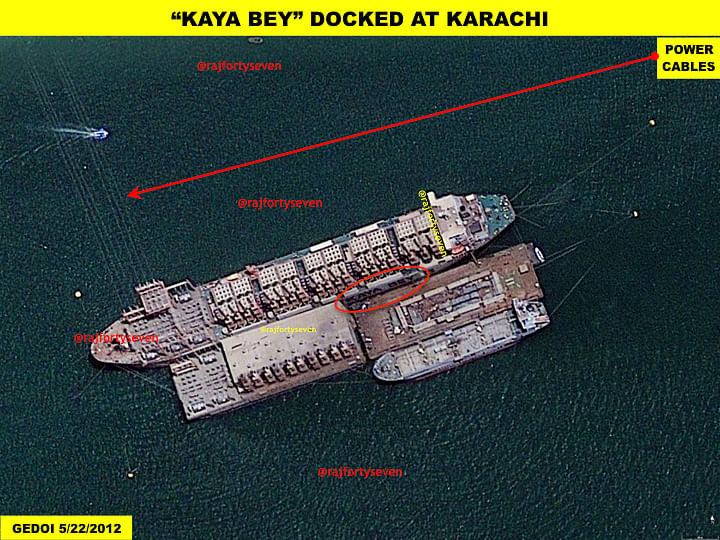
Close ally China stepped in five years ago, in 2013, just as President Xi Jinping’s Belt and Road Initiative (BRI) began to take shape.
Beijing made Islamabad an undeniable offer of two power reactors named Hualong-1, a Chinese pressurised water nuclear reactor developed by the China General Nuclear Power Group (CGNPG) and the China National Nuclear Corporation (CNNC) based on a French design, ACP-1000.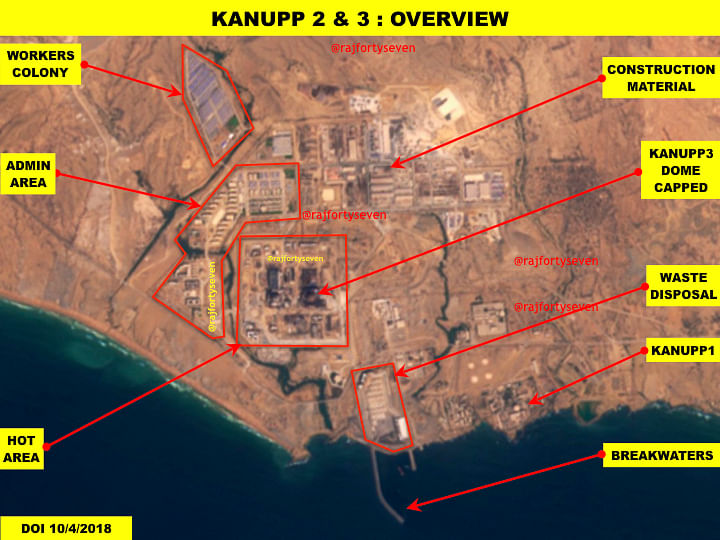
The reactors were for the Karachi Nuclear Power Plant-2 and 3 (KANUPP-2 & KANUPP-3). Pakistan is planning to acquire another Hualong-1 reactor for the Chashma Nuclear Power Plant-5 (CHASNUPP-5).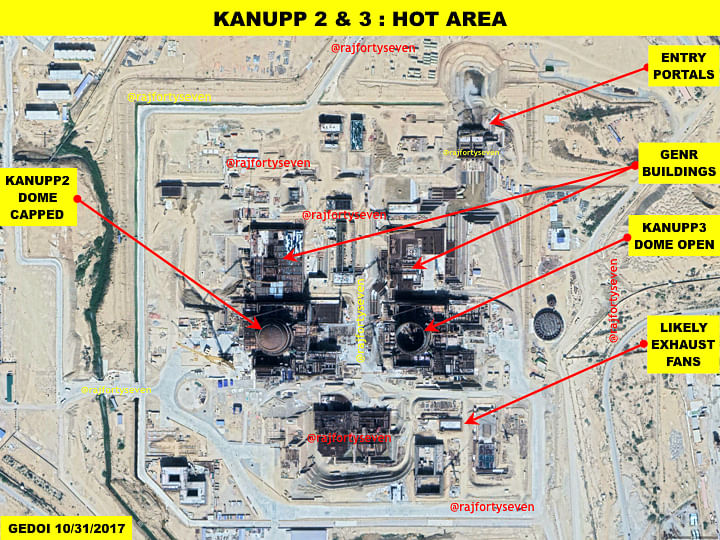
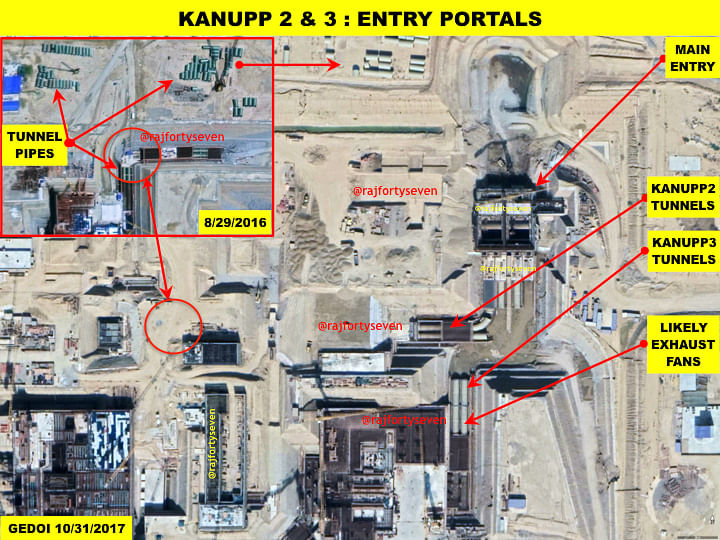 Under the deal, 86 per cent of the construction cost was to be borne by the vendor, though the options to recover this loan, amounting to nearly $10 billion, are not known publicly.
Under the deal, 86 per cent of the construction cost was to be borne by the vendor, though the options to recover this loan, amounting to nearly $10 billion, are not known publicly.
The construction of the two power plants began in 2013, about 25 km west of Karachi at Paradise Point, at the same site as KANUPP-1, which was inaugurated in 1972.
According to satellite images of the two new plants, their construction appears to extend 50-60 metres into the ground. This suggests the possibility that almost the entire facility may go underground after construction. The design of partially embedded plants allows the use of waste heat generated during the process.
Although the separation of various divisions of the two plants looks good, the distance between different facilities within each plant may not be sufficient, which could make it difficult to control a fire.
Ease of access has been catered to through shafts and tunnels. The main entry portal has four tunnel entries that are five metres wide — two each for the two plants. Ventilation ducts for environmental control systems have been seen at many places along the tunnels as well as at other places.
There are also ducts to connect different divisions within and outside the plants. A few other openings possibly provide for escape during emergencies.
At the current stage of construction, it looks like the container dome may remain overground, providing ease of access for fuel for the reactor.
Cooling systems & waste disposal
The active cooling systems for both plants are conjoined and possibly have six large fans, three each for the two plants.
A waste treatment and disposal area is under construction, which will possibly take treated waste water directly to the sea with two proper breakwaters constructed specially for the plants.
The water exit may not be visible once the plants are operational since it is likely to be connected underwater.
The administrative area has been constructed west and northwest of the plants, and also caters to the residential complex. There is a Chinese colony of almost 70 barracks north of the construction site, which indicates that most of the workers and engineers at the two plants are from China.
Two large buildings have been constructed to the southeast of the plants, which could possibly be either for the Karachi Institute of Power Engineering (KINPOE) to be shifted here, or a guest house.
KINPOE is affiliated to the Pakistan Institute of Engineering & Applied Sciences (PIEAS) and offers a master’s degree in nuclear and power engineering. The last admission test for KINPOE graduate courses was held on 7 October.
Dangerous siting and design
The idea to build underground nuclear plants is basically meant to mitigate damage in the event of disasters. However, the plants have been set up in an area that is extremely prone to seismic disturbances, as Karachi is located on the cusp of three tectonic plates, the Arabia plate, the Eurasia plate and the India plate.
During an earthquake or, worse, a tsunami, buried structures bear the brunt of the tremors. Any such disaster in Karachi could thus put the safety of the entire city of Karachi and surrounding areas at risk.
The wind corridor in this area runs from Karachi to Hyderabad (Pakistan), with the wind flowing towards the northwest for the better part of the year. Thus in the event of a radiation leak, however unlikely, the entire wind corridor will be adversely effected.
Safety mechanisms for such structures should cater to additional protection for the population in nearby areas.
Also read: This is what China is doing to protect its nuclear weapons
Controlling fire and radiation leaks is generally achieved by automatic systems that shut down different parts of the facility in the event of an accident, blocking the escape of people working in those parts entirely.
This design and siting of the two nuclear power plants only provides safety against the even more unlikely event of an air crash or sabotage through aircraft.
There are already many public interest litigations about the safety aspect of these plants in Karachi courts.


